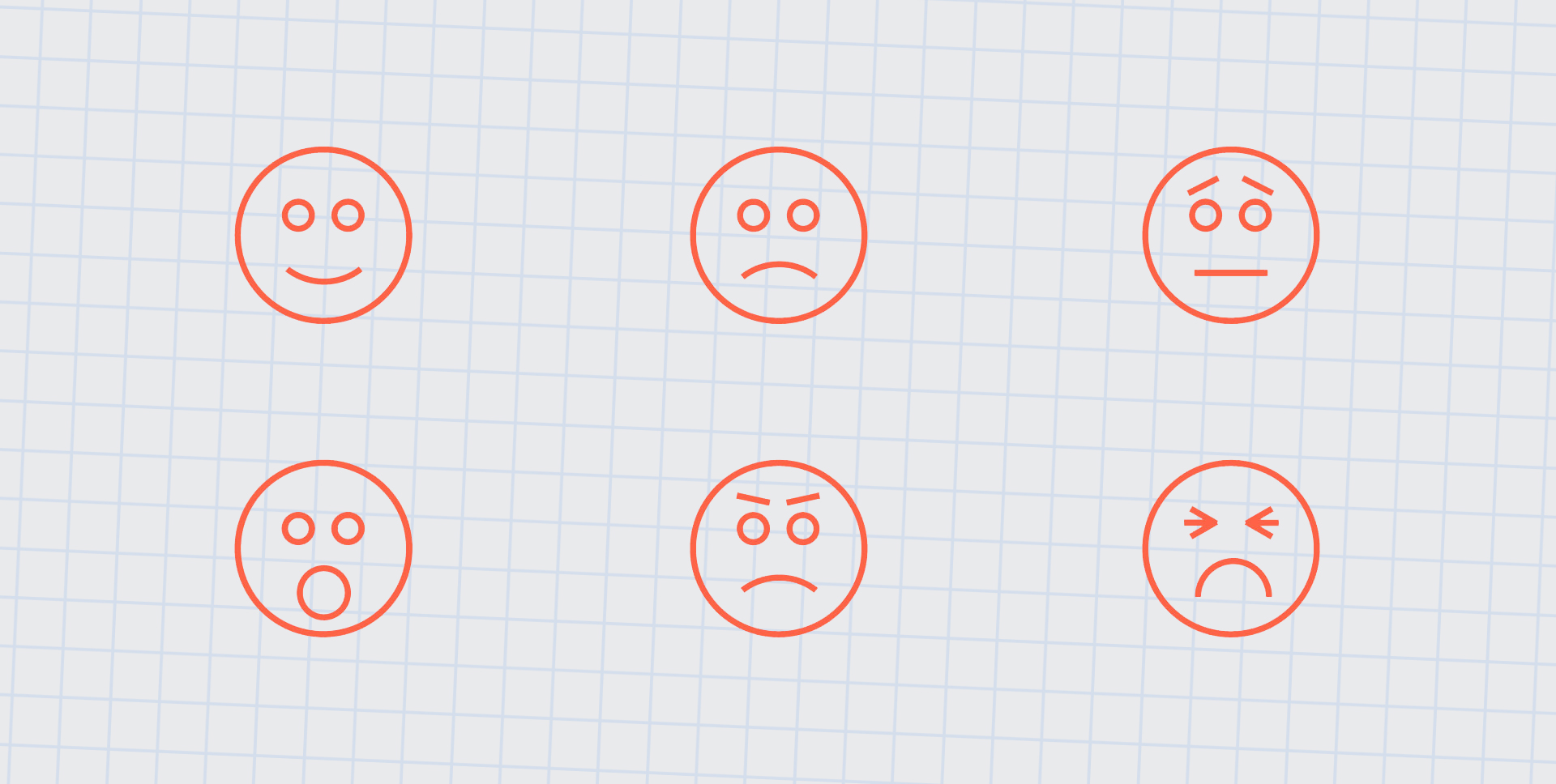Charles Darwin wrote in his 1872 book, The Expression of the Emotions in Man and Animals that “facial expressions of emotion are universal, not learned differently in each culture”. There have been arguments both in favor and against ever since.
Several studies since then have attempted to classify human emotions, and demonstrate how your face can give away your emotional state. It has been argued that people are generally relatively skilled at telling another person's mood, simply by taking a glance at them.
The Key Research in Favor of Universally Recognized Facial Expressions of Emotion
The seminal research into the topic came from psychologist Paul Ekman, who pioneered research into emotion recognition in the 1960s. His team of scientists provided their test subjects with photos of faces showing different emotional states. The test subjects had to classify the emotional states they saw in each photo, from a predetermined list of possible emotions. Other research studies over the years have used similar methods.
Ekman’s initial research determined that there were six core emotions, which he termed universal emotions. These original universal emotions are:
Joy (Sometimes referred to as 'Happiness') - symbolized by raising of the mouth corners (an obvious smile) and tightening of the eyelids
Surprise - symbolized by eyebrows arching, eyes opening wide and exposing more white, with the jaw dropping slightly
Sadness - symbolized by lowering of the mouth corners, the eyebrows descending to the inner corners and the eyelids drooping
Anger - symbolized by eyebrows lowering, lips pressing firmly and eyes bulging
Disgust - symbolized by the upper lip raising, nose bridge wrinkling and cheeks raising
Fear - symbolized by the upper eyelids raising, eyes opening and the lips stretching horizontally
There is a seventh emotion that is sometimes considered universal.
Contempt - symbolized by half of the upper lip tightening up (using what is called the risorius muscle) and often the head is tilted slightly back.
There is some dispute as to whether this is considered a universally recognized emotion. It is really a measure of anger and disgust, and was an additional emotion Paul Ekman added in the 1990s.
What about other obvious emotions we feel, such as guilt, shame, jealousy and pride? While we genuinely feel these as emotions, we do not tend to show clear and obvious expressions. That is probably why so many people are able to hide these emotions from those around them - the emotions often do not show on their faces at all.
Robert Plutchik who was an adjunct professor at the University of South Florida, basically agreed with Ekman's biologically driven perspective but developed his own model, called the "wheel of emotions". This suggested that there are eight primary emotions, grouped on a positive or negative basis: joy versus sadness; anger versus fear; trust versus distrust; and surprise versus anticipation. Theses basic emotions can in turn be modified to form complex emotions.
Later Research and Microexpressions
Over time, Ekman expanded his model and added additional emotions during the 1990s. As I have already stated, he somewhat controversially added contempt as a universal emotion, clearly visible on people’s faces. The other new emotions he recognized are: amusement, contentment, embarrassment, excitement, guilt, pride in achievement, relief, satisfaction, sensory pleasure, and shame.
Some of these can be seen in microexpressions. Microexpressions are very quick facial expressions involuntarily made by people in particular circumstances. It is almost impossible to hide microexpressions. Good poker players, for instance, closely examine their opponents' faces looking for microexpressions which may give away the nature of the cards they have in their hands.
Microexpressions often occur in a fraction of a second. They can, of course, be captured by high speed cameras and used for analysis.
Research Disputing Universally Recognized Human Expressions
Not everyone agrees with the concept of there being recognized human emotional expressions. Recent studies by the Interdisciplinary Affective Science Laboratory dispute the notion that there is a clear link between a human being's facial expression and his or her emotions.
Lisa Feldman Barrett has recently had concerns about the legitimacy of Ekman’s tests, because they use predetermined states. She believes that by providing the subjects with a list of possible emotions, this was effectively giving hints to them. Her team of researchers have run experiments where the test subjects had to describe emotions they see in peoples' faces without any prompts. The result was that they found it much more difficult to determine emotion from faces. They could determine positive emotion from negative emotion, but not much more.
In particular one of their experiments was to test photos on a remote tribe in Namibia called the Himba. The Himba members were able to sort all of the smiling faces into a pile (they called "laughing") and all of the wide-eyed photos into a pile (they called "looking"), but were unable to sort other photos into obvious piles reflecting emotions.
Barrett therefore disputes the theory that emotions are universally recognized.
Conclusion
We have seen that the whole area of recognizing human emotions and microexpressions is actually a very complex field. There has never been complete agreement on exactly which emotions are clearly expressed in peoples’ faces, either as clear and obvious expressions or as microexpressions.
So, where does Kairos stand on this? How does the Kairos Emotion Analysis API work? Which emotions does it feel confident enough to look for and detect? My next blog, What is Emotion Analysis? will reveal all.

Cole Calistra
Cole is the CTO at Kairos, a Human Analytics startup that radically changes how companies understand people. He loves all things cloud and making great products come to life.
